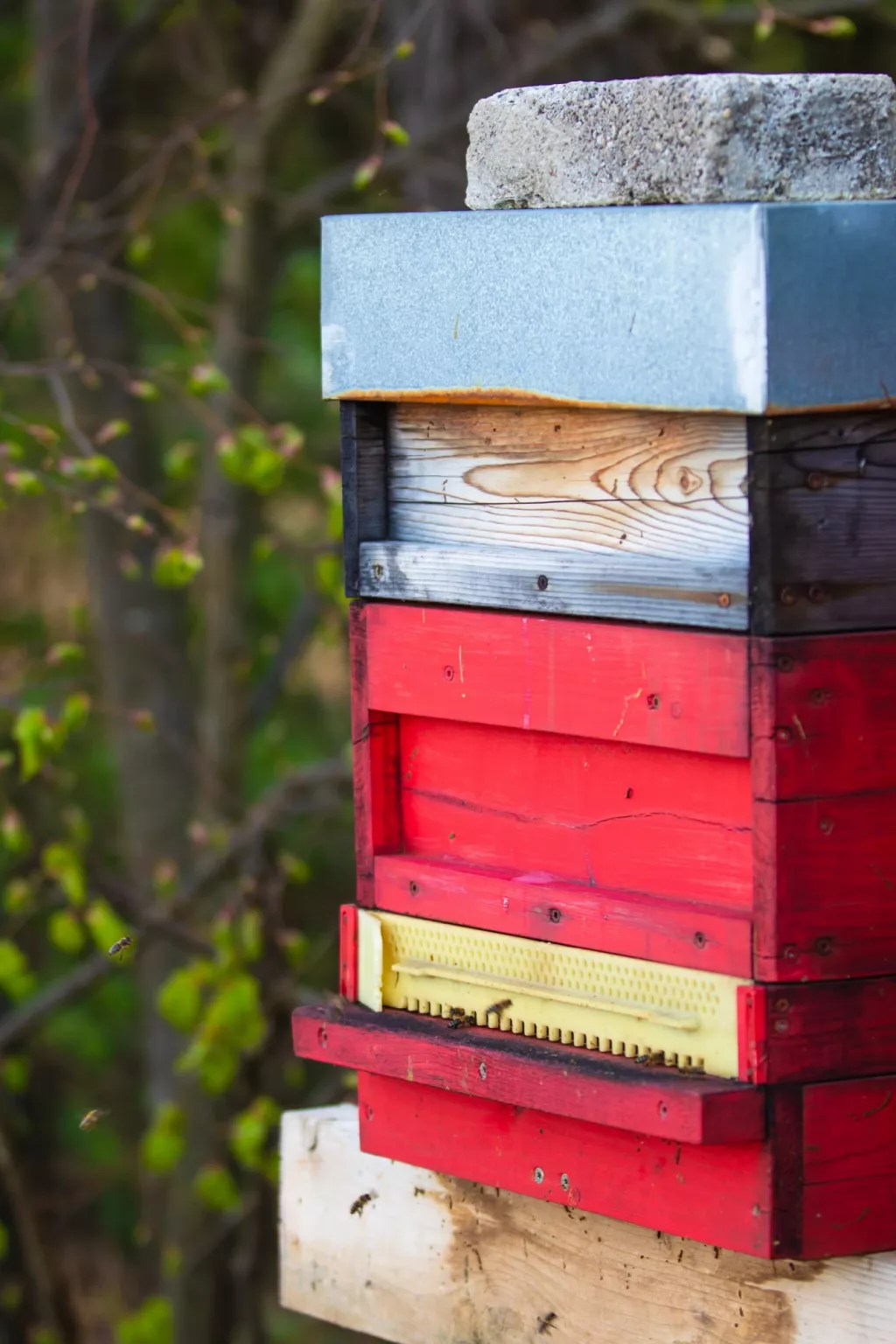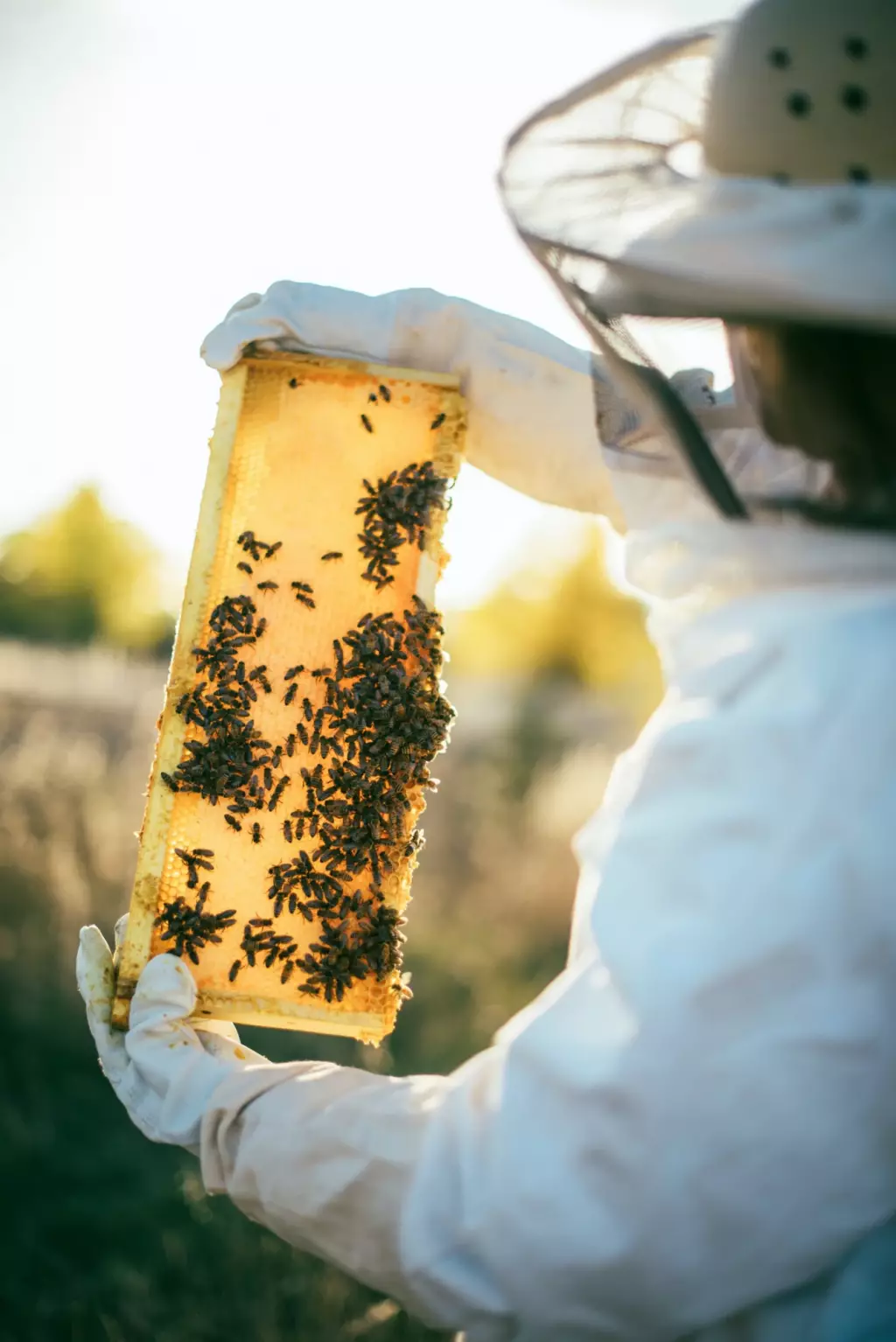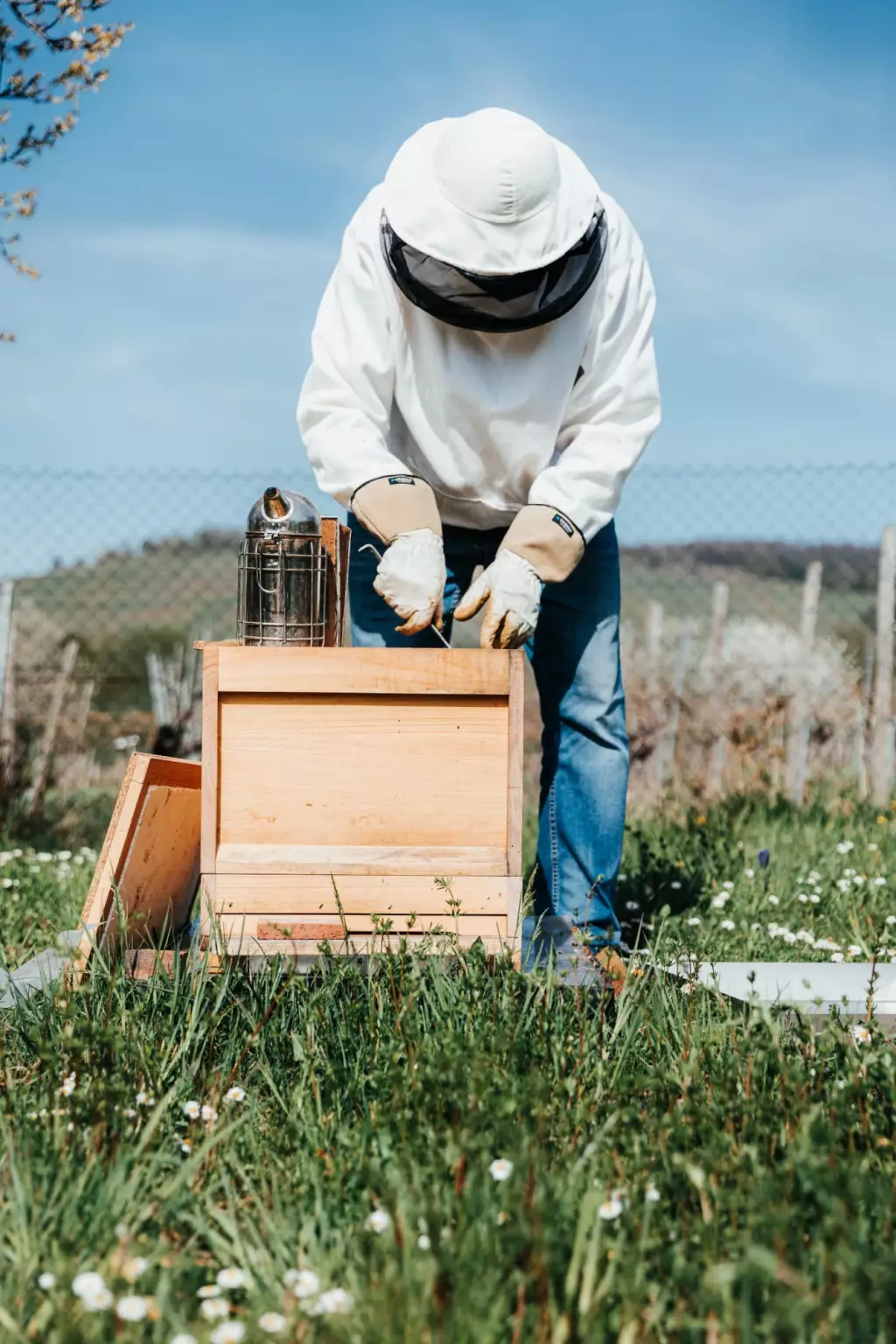How Much Honey Can You Harvest from One Hive?
Bees are one of the hardest-working insects on the planet. That's why we can collect way more honey from their hives than most people think.
A single healthy hive can produce an average of 50-100 lbs of honey during a good season. However, most of this honey will be consumed. An average hive will produce around 25 lbs of surplus honey available for harvest.
This may seem like a lot of honey, but it’s important to keep in mind that honeybees use the majority of their honey as food reserves for the winter. This means that beekeepers must be careful not to take too much honey from a hive because doing so might endanger their survival.
Summary
- A healthy hive can produce up to 50 to 100 lbs of honey during a good season
- A strong hive consists of 20,000 to 80,000 female worker bees
- A single colony can consume up to 70 - 100 lbs of honey
- The best time to harvest honey is during late summer to early fall

On this page:
How Much Honey Can You Harvest From One Hive?
Depending on several factors, a single hive can produce anywhere from 25 to 100 lbs of honey.
The size of the colony plays a big role in determining how much honey a hive can produce. A large colony of 20,000 to 80,000 female worker bees will have more bees foraging for nectar and pollen, which can lead to a higher honey yield. However, a large colony also requires more food to sustain itself, so the bees may not have as much surplus of honey to harvest.
Another important aspect to take into account is the colony’s health. Healthy bee colonies are more effective at foraging for nectar and pollen and are likely to produce more honey. While a colony struggling with disease or pests will likely produce less honey.
The availability of nectar sources is also a crucial factor in determining how much honey a hive can produce. If the hive is located in an area with plenty of nectar sources, the bees will be able to gather more nectar and produce more honey.
However, if bees are forced to travel long distances to find nectar, they may not be able to gather as much.
How Much Honey Is Inside a Ten-Frame Hive?
The full weight of a full ten-frame deep box of honey is estimated to be between 80 - 90 lbs and a full ten-frame medium box is estimated to be between 65 - 75 lbs. Each frame in the box holds about 8 lbs of honey for the deep box and 6 lbs of honey for the medium box.
According to Caron and Conner, a colony should have a brood in the centre of the lowest box. It is surrounded by frames of honey and pollen, with the two outermost frames filled with just honey. A second deep box should be filled with all ten frames of honey, which should be enough to get the colony through winter.
In temperate states, a medium box can be used instead of a second deep box. This would provide 72 pounds of honey plus any additional on the pollen frames.
How Much Honey Do Bees Need to Survive for Winter?
A single colony can consume up to 70 - 100 lbs of honey. The bees use honey as a food source to generate heat and sustain themselves through the winter months when nectar is not readily available.
Worker bees have a very short lifespan, but as long as the colony has a healthy queen, they’re quickly replaced by new workers. As a colony, worker bees can produce several hundred pounds of honey in a year.

To ensure the colony’s survival, beekeepers will often leave enough honey for the bees to survive the winter. They may even supplement the hive with sugar syrup if necessary. This includes when packages are first installed, or when the colony is new and still establishing itself.
Here are a couple of guidelines for leaving honey:
- The average amount to leave honey behind for your colony is 80 to 90 lbs.
- Always check the brood boxes for honey
- Check the weight of the honey frames
How Much Honey Does a Single Bee Produce?
A single bee can produce 1 tablespoon of honey in its lifetime. It all begins when worker bees extract nectar from flowers. They stick their long tongues to suck the nectar which is rich in sugar.
After the nectar is extracted, the honey-making process continues. Bees ingest the nectar and store it in their abdomen, known as the “honey crop”. The ingested nectar is modified by combining it with certain enzymes and changing the pH of the honey.
When the bee returns to the hive, they pass their collected nectar to other younger worker bees. These young bees extract and break down the nectar through various enzymatic digestions into simpler compounds, mainly fructose and glucose.
This explains the sweet honey flavour and great caloric intake. The younger bees continue to chew this nectar for about another half hour until the nectar’s humidity reaches 18-20%.
Some beekeepers may want to obtain honey from certain flowers and what they usually do is place the hives next to specific flowers. As a result, the colony can produce acacia honey, manuka, clover, wildflower, etc.
Can You Harvest Honey at Night?
It is not recommended to harvest honey at night, especially for beginners. Even experts may find it difficult to harvest during nighttime. For one thing, bees are more likely to be active and defensive when disturbed at night. They’re more likely to sting which is dangerous for the beekeeper.
Another challenge is that it can be difficult to see what the beekeeper is doing. Going about it blindly can increase the risk of accidentally crushing bees or damaging the hive. Beekeepers may need an extra hand to assist in the harvesting operations. Lanterns or hive torches are prohibited as well since bees attracted to the fire, can be burned to death.
There are special techniques beekeepers use such as using smoke to calm the bees. But it’s also important to note that using smoke may damage the hive and make the bees more defensive so it should be used with caution.
When Is the Best Time to Harvest Honey?
The ideal time to harvest honey is during late summer or early fall. Make sure to check if the honeycomb is clean and has not been contaminated with mice, wax moths or brood chambers in them. Early honey is light and mild while later honey is darker and generally stronger.

When extracting honey, the honeycomb should be at least 80 to 90% capped. If there are uncapped honeycombs, then make sure the honey doesn’t drip out of its cells. A very wet honeycomb means it has above 18% moisture content and is prone to ferment faster than your typical honey.
Additionally, it’s important to harvest the honey before the cold winter months set in. This is because honey will harden and crystalise, making it much harder to extract. As the temperature drops to 55 degrees, the bees will begin to cluster around the queen and flap their wings to raise the temperature to around 96 degrees.
As it takes a lot of energy to shiver and flap their wings to keep the hive warm, the bees will eat the honey to replenish their energy until spring comes again.